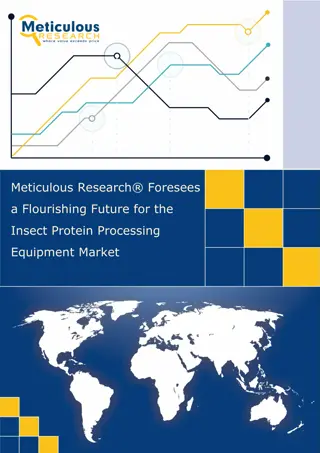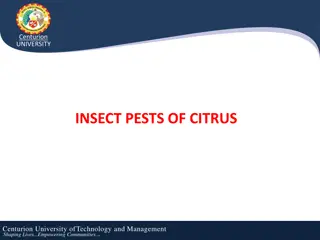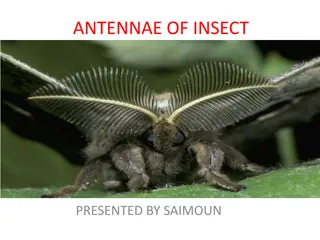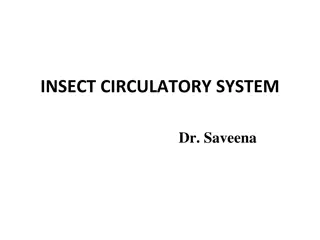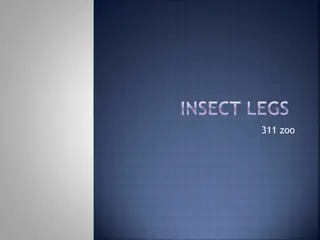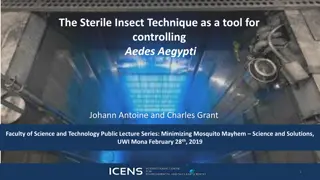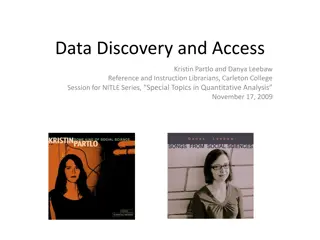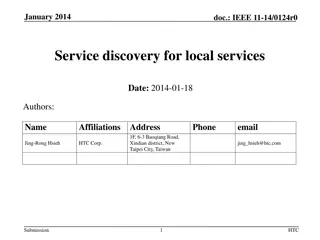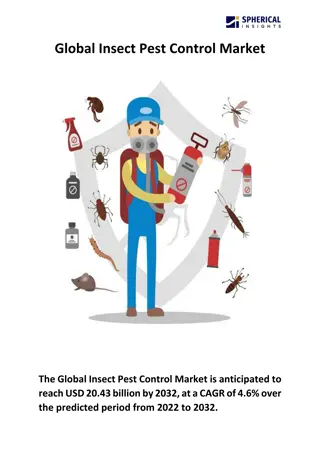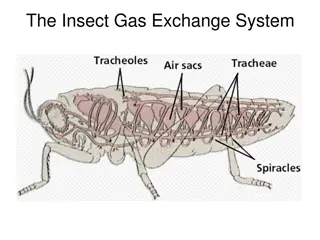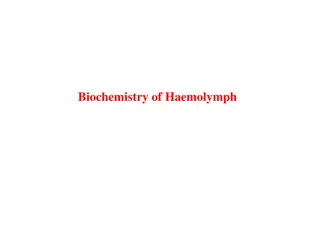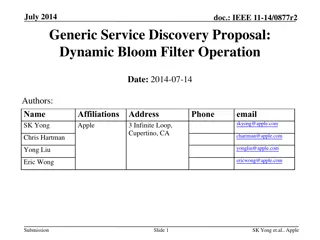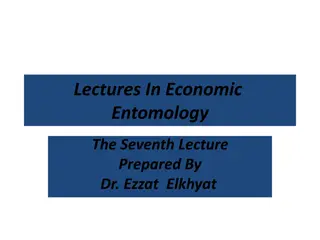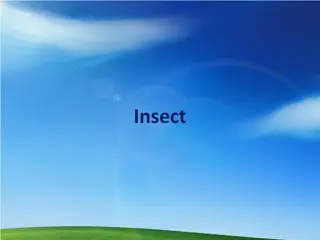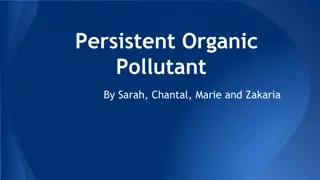The Discovery and Impact of DDT on Insect Control
Paul Miller's 1939 discovery of DDT as an effective insecticide led to its Nobel Prize recognition in 1948. DDT's preparation, physical properties, insecticidal effects, and environmental concerns are discussed, highlighting its widespread use in developing nations despite bans in advanced countries due to its harmful effects on wildlife and ecosystems.
Download Presentation

Please find below an Image/Link to download the presentation.
The content on the website is provided AS IS for your information and personal use only. It may not be sold, licensed, or shared on other websites without obtaining consent from the author. Download presentation by click this link. If you encounter any issues during the download, it is possible that the publisher has removed the file from their server.
E N D
Presentation Transcript
Paul Miller in 1939. He discovered that DDT was very effective against mosquito housefly and bed bugs. In other word, DDT was found to be a broad spectrum insecticide, it is not selective. This earns him a Nobel prize in 1948.
chloride and 1,1,1-trichloroethanal (chloral). DDT was the first synthetic insecticide known. The reaction is illustrated below
several methods of synthesis. It has been used specifically for soil insect control, malarial eradication through killing of mosquitoes. It is also used for the control of termites.
waxy solid with melting points of 90oC. The para-para DDT is a white powder with a melting point of 110oC, insoluble in water.
resulting into partitioning into the body fat. This has led to the total ban of DDT in advanced countries; though it is still widely used in developing nations, where environmental control and monitoring is not effective. A major disadvantage of DDT and its analogue is that it is readily detoxified by some insects that are resistant to it; e.g. DDT can be converted easily to Diphenyl dichloro ethylene (DDE). This conversion is aided by an enzyme
certain insects have developed enzymedehydrochlorinase. In mammals and birds, DDE is further converted to diphenyldichloroacetic acid (DDA).
the fact that they interfere with the transmission of nerve impulses in insects, thereby interrupting or upsetting the K+and Na+balance of their nerve membrane.
disruption of the nerve connection and since they are slowly metabolized and lipophilic, they partition into the body fat, hence frequent exposure must be avoided. There have been reported cases of accidental killing of birds, fish and other non-targeted species such as egg shell thinning in species near the top of the food chain.
DDME is called methoxylchloro. Its preparation is via condensation of chloral and methoxyl benzene (anisole):
animals. This is as a result of their high solubility in water. It is a pro- organochlorine insecticide known for its less toxicity compare to DDT. Hence, DDME is a good insecticide for livestock treatment. The presence of methoxyl group surrounding the side chains of the benzene ring, account for its high solubility. DDME is resistant to heat, UV radiation and oxidation.
General feature of organophosphate insecticide is represented thus:
physicochemical and biological properties made them to be widely useful in agriculture and natural hygiene. Some are used as fumigants; others are used as contact poison and for crop protection in their early growing season. In most cases, they are used n plants such as sorghum, corn, cotton, rice, wheat, barley and soybeans. They are equally used in crop fruits and vegetables for foliage and root protection. In veterinary
owing to the depolarization of P=O bond and partly due to the electron- withdrawing nature of para - nitro phenyl moiety. This enhances its high solubility in water.
Mode of action of Organophosphate insecticide
property of the phenyl group makes the phosphorous atom electrophilic, hence its ability to phosphorylate nucleophile such as co-enzyme A and also, the 4- nitro phenyl moiety is a good leaving group.
Toxicology of Organophosphorous insecticides
However, the most effective antidote is to organophosphate poisoning is atropine, which blocks acetycholine receptors of the motor end of plate of the para sympathetic nervous system, that controls the respiratory muscle. Generally, organophosphorous are less toxic compare to organochlorine insecticide. The y do not persist in the environment and are water soluble compare to DDT.




